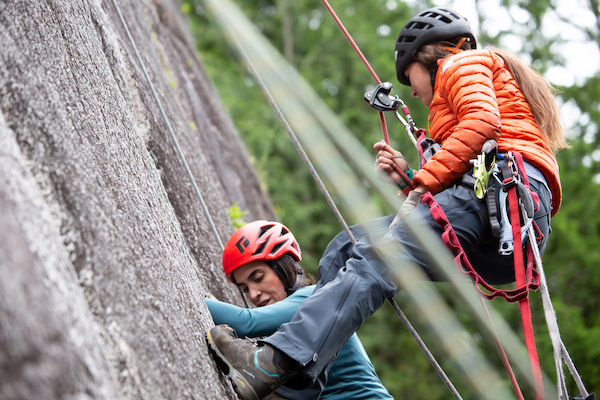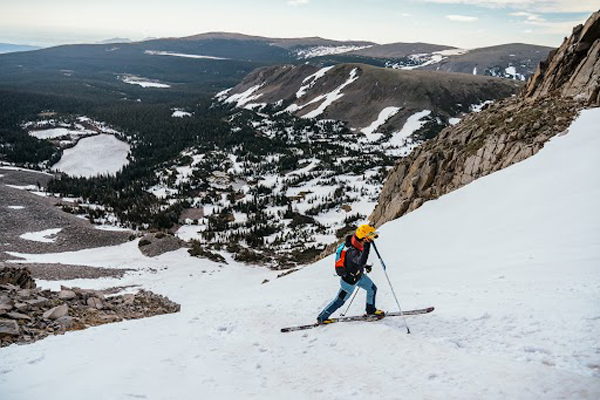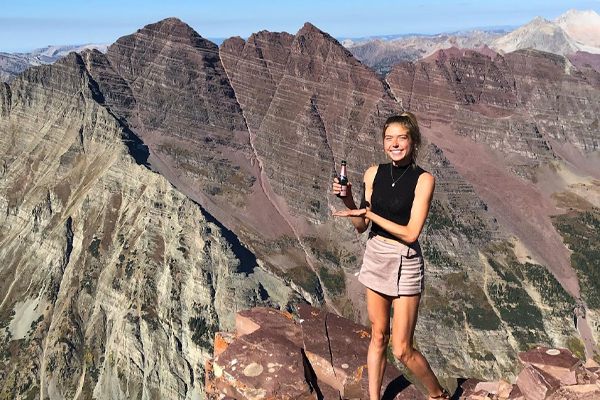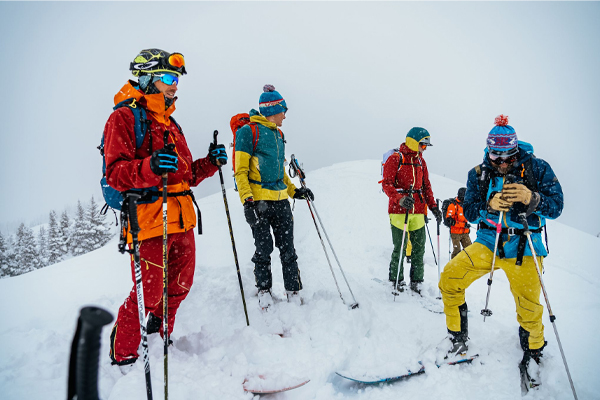Jacinda Hunter - Deep Water Soloing

I had about 1.58 seconds to figure out how to enter the water from approximately 40 feet in the air...
- - -
I had about 1.58 seconds to figure out how to enter the water from approximately 40 feet in the air. It took me about that long to realize how I had just screwed up the dyno move in last year’s Psicobloc competition in Park City, Utah. Moments later as I surfaced with the wind knocked out of me and feeling almost paralyzed, all I could do was look at the life guard and silently mouth the word “help”. I’m sure the look of terror in my eyes as I struggled to stay afloat was enough for him to know I needed to be pulled out. Falling seemed to pass by in fast forward, although waiting for the lifeguard to pull me out seemed like an eternity. I remember wondering why he was moving so slowly, when I was obviously in trouble. After regaining my breath and having a little oxygen, I was well enough to realize that I wasn’t well enough to keep climbing that night, and ended up driving myself to the emergency room instead. The pain in my back was excruciating. I couldn’t even lie down. Sitting up straight was the only comfortable option. Fortunately, there was no damage to the spinal column other than soft tissue damage, which would heal in time. My ego was bruised far deeper than my back.
The bigger issue for me was the realization that deep water soloing was actually dangerous…I’m not saying I was totally clueless to its dangers before, or had never experienced fear while deep water soloing, but before the accident, I did have a certain level of confidence that I was beyond the realm of injury. I was actually a diver for a short time in high school, and on the swim team, so I was pretty comfortable with the water and falling. I always thought if I came off the wall in a strange way I could do something awesome like a flip or dive into the pool. Obviously, my dream of turning a failed climbing performance into an aerial acrobatic side show was a complete “flop”.
Three weeks after my unfortunate incident in Park City I was back on the rock over water, except this time higher and scarier than the last. I was competing in the Psicoroc competition at Summersville Lake in West Virginia. I found myself staring up at a completely horizontal roof that was 50 feet over the water, and wondering what the hell had I gotten myself in too? I lost all my confidence. All I could see was disaster. I started thinking of my kids and wondering why I would take such risks when they depend on me. I thought of the worst case scenario and seriously questioned if I could even attempt the climbing that day. My back was still sore from the previous fall, and my nerves were off the chart. Somehow, I managed to gather up the nerve (or stupidity depending on how you see it) and complete the climb.

It’s hard to describe the surreal feeling of deep water soloing, which is what keeps me coming back to this climbing discipline that has been growing tremendously in popularity over the last decade. Films such as "Perfecto" directed by Mike Call, have highlighted the thrill and excitement that deep water soloing brings to not only the climber but the spectator as well. It does not take being a climber to imagine the wild feeling of adventure that comes from dangling high above a not-so-soft landing, and experience the nervous trepidation when seeing someone falling from those heights. For the first time, I think this actually makes climbing interesting and exciting for the non-climber to watch.
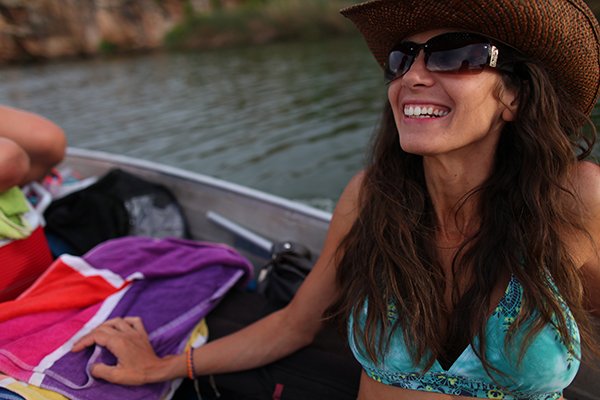
This has led to an explosion on the competition scene with new deep water soloing venues being built, and competitions taking place all over the world. The US National Whitewater Center in Charlotte, NC has built a new venue and is kicking it off its grand opening by hosting its first deep water solo competition at Tuck Fest, with professional athletes from all over the country coming to compete. The manmade venues have been able to further capitalize on the thrills by creating a race format on the wall, with two climbers side by side racing up identical routes. This unique format incorporates several climbing disciplines: bouldering-style movement, sport climbing endurance, and speed to break ties. It allows the audience to feel the intensity of a race, while watching the juggling of fear and difficulty high over the water. No other climbing competition has come close to providing the same show that deep water solo competitions offer, and I can only imagine the sport will continue to grow.
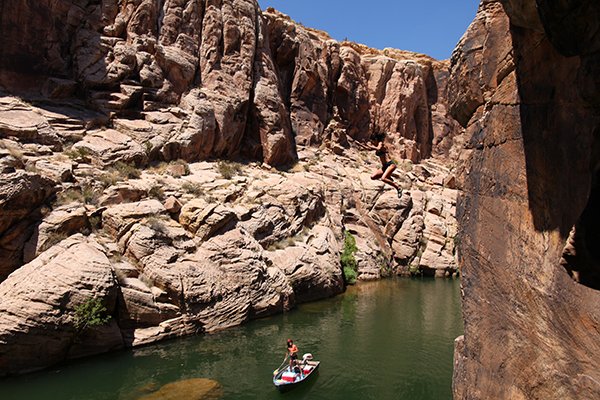
The growth and rising popularity of deep water soloing will come with a unique set of challenges such as safety, access issues, injury, and the development of new climbing areas. Keep in mind that hitting the water at 35-40 miles per hour is much more akin to a car accident than a belly flop off the high dive, and “would be” deep water soloer’s should take a cautious and gradual approach when learning the sport. It goes without saying one should never do it alone, and obviously be a good swimmer. I thought my experience as a diver made me the perfect candidate to get out of a bad fall, but I learned quickly that was not the case. Deep water soloing is a risky sport and should be approached with caution. That being said I have not found any other modality in which I have ever felt so completely present and alive while climbing. I absolutely love this sport and hope to continue it for years to come.
Photos: © Mike Call and Dean Lord





